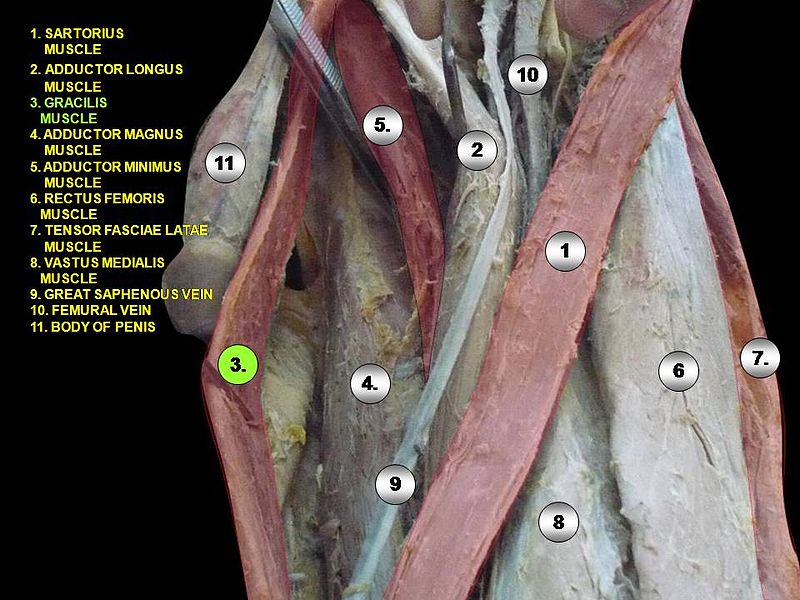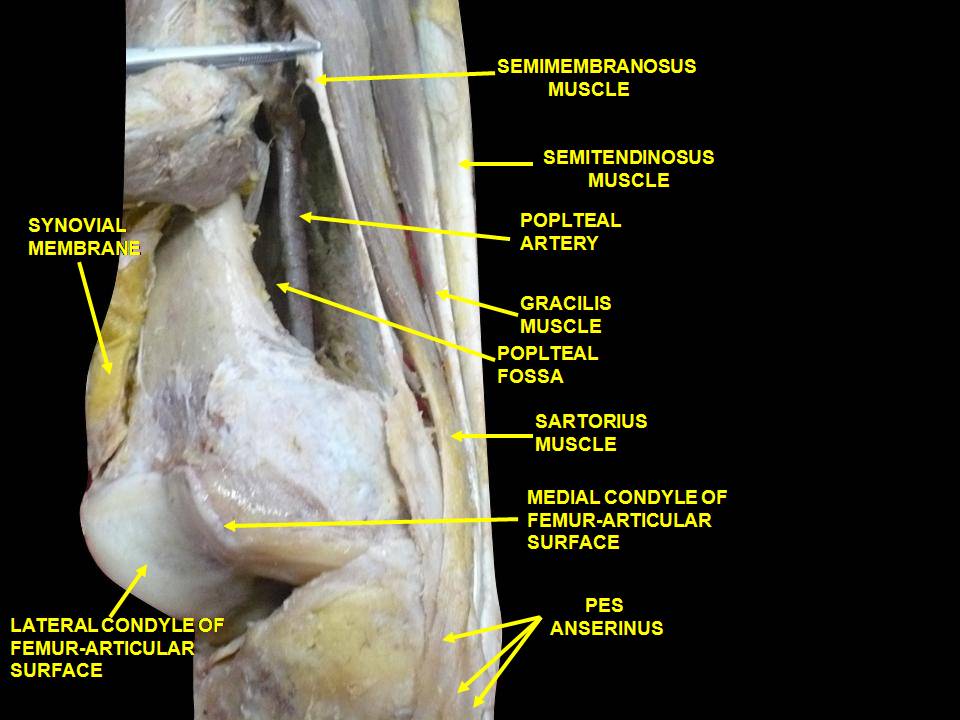The Gracilis: Have you considered it in your medial knee pain patients?
/The gracilis is the 3rd, seldom mentioned contributor to the pes anserine when it comes to knee pain. It lives in the medial compartment of the thigh and helps to add stability to the medial stabilizing complex of the knee.
image credit: https://en.wikipedia.org/wiki/File:Slide3rrr.JPG
During an ideal gait cycle, the gracilis tonically contracts throughout stance phase with bursts from terminal swing through initial contact and again from pre swing to initial swing; it is very similar to the adductors in this respect
The gracilis is a superficial muscle on the medial thigh, running from the the pubic symphisis and upper pubic arch to the pes, sandwiched between the sartorius and semitendinosis. The muscle adducts, medially rotates (with hip flexion), laterally rotates, and flexes the hip , and also aids in flexion of the knee. It can be called upon as a thigh flexor (as can the sartorius) when the abs (particularly the external obliques) do not initiate thigh flexion and the TFL, rectus femoris and iliopsoas groups are dysfunctional. Gracilis dysfunction may contribute to medial knee pain when the thigh needs help flexing. We see this particularly on people with excessive mid foot pronation when the foot remains on the ground too long and need some “help” or a “jump start” to initiate thigh flexion.
Think about this “unsung hero” next time you have a recalcitrant medial knee pain patient.
Gupta, Aman & Saraf, Abhinesh & Yadav, Chandrajeet. (2013). ISSN 2347-954X (Print) High-Resolution Ultrasonography in PesAnserinus Bursitis: Case Report and Literature Review. 1. 753-757.
Gray H: Anatomy of the Human Body Lea and Febiger, Phildelphia and New York 1918
Michaud T: in Foot Orthoses and Other Forms of Conservative Foot Care Williams & Wilkins, 1993 Pp. 50-55
Michaud T: in Human Locomotion: The Conservative Management of Gait-Related Disorders 2011


















